The ups and downs of a women’s soccer team in Pakistan.
Nina was getting frustrated. It was her third time doing the drill. She zigzagged through a maze of cones, tapped the ball twice with her foot to set up the shot, and once again sailed it over the goal. The ball rolled to a halt at the far end of pitch. Nina cursed, let out a large groan, and sprinted to retrieve it before getting back in line to try again.
She and the other players of Karachi United (KU) women’s team took a few more shots. (Nina did eventually get one on target, but the keeper saved it.) Then, as the call for evening prayers sounded, the squad took a break. Even in March, Karachi isn’t particularly cold and the air was still warm after the sun went down. The players were training in a renovated residential park in Clifton, a middle class neighborhood close to the sea, which the club rented on a more permanent basis. There was a cluttered little office in one corner, and some club banners strung outside. On the banners was the club crest: a red and black shield with a similarly colored soccer ball at its center and three strips around it, forming a loose triangle. The number 1996 is written at the bottom, the year the men’s club was founded.
The women’s team, however, wasn’t formed until 2010. While the men play professionally, the women’s squad technically isn’t even registered. “We sent out a registration form to the PFF [Pakistan Football Federation, the national soccer association] last year and the year before. We never get confirmation. Just replies of ‘we haven’t received it yet,’” Mashal Hussain, the captain, told me over tea after training.
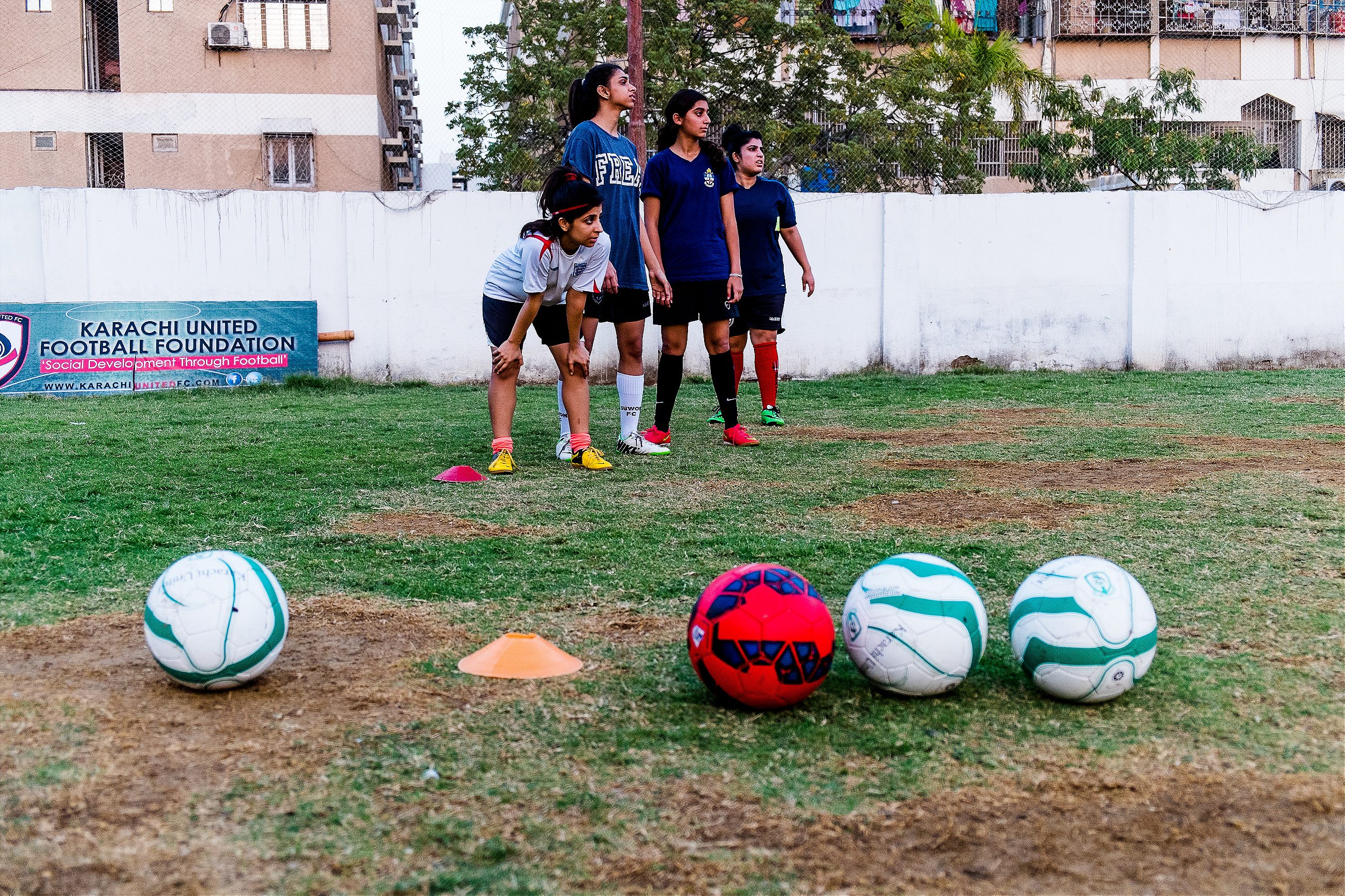
Hussain didn’t have to tell me that sport is not a professional, or even a recreational, outlet for most Pakistani women. It remains primarily a man’s domain. And soccer itself is somewhat of an afterthought in South Asia, where cricket is overwhelmingly the preferred sport. These days, when the cricket World Cup is taking place, the sports channels drop their regular transmission of the English Premier League or the Italian Serie A for the day’s cricket highlights. The Pakistan men’s football team is ranked 171st in the world; the women’s club is better at 122nd, but, according to FIFA, all the teams that are ranked below 132nd have been inactive for the last 18 months, effectively putting the Pakistani club tenth from bottom, better than only Afghanistan, Swaziland, and a few Caribbean territories.
Being women in a deeply conservative country and playing a sport that isn’t particularly popular in the first place are the obvious impediments to growth for KU, and they start within the club itself. “It took some time for the men to even give a shit. When we pitch an idea to them, about a tournament or an event, they’re first reaction is never, ‘How can we help?’ It’s always, ‘How’re you going to get the money for it?’” Hussain said.
While permission from the family hasn’t been an issue for the players, Khadija Kazmi, a senior team member and employee of the KU foundation, tells me her family doesn’t take her involvement seriously. “If I have training and my sister wants to go shopping, my sister will always get the car before me,” she told me bitterly. “When there’s something happening, my family tells me, ‘Why don’t you skip it? It’s just football.’ It’s also everything I do.”
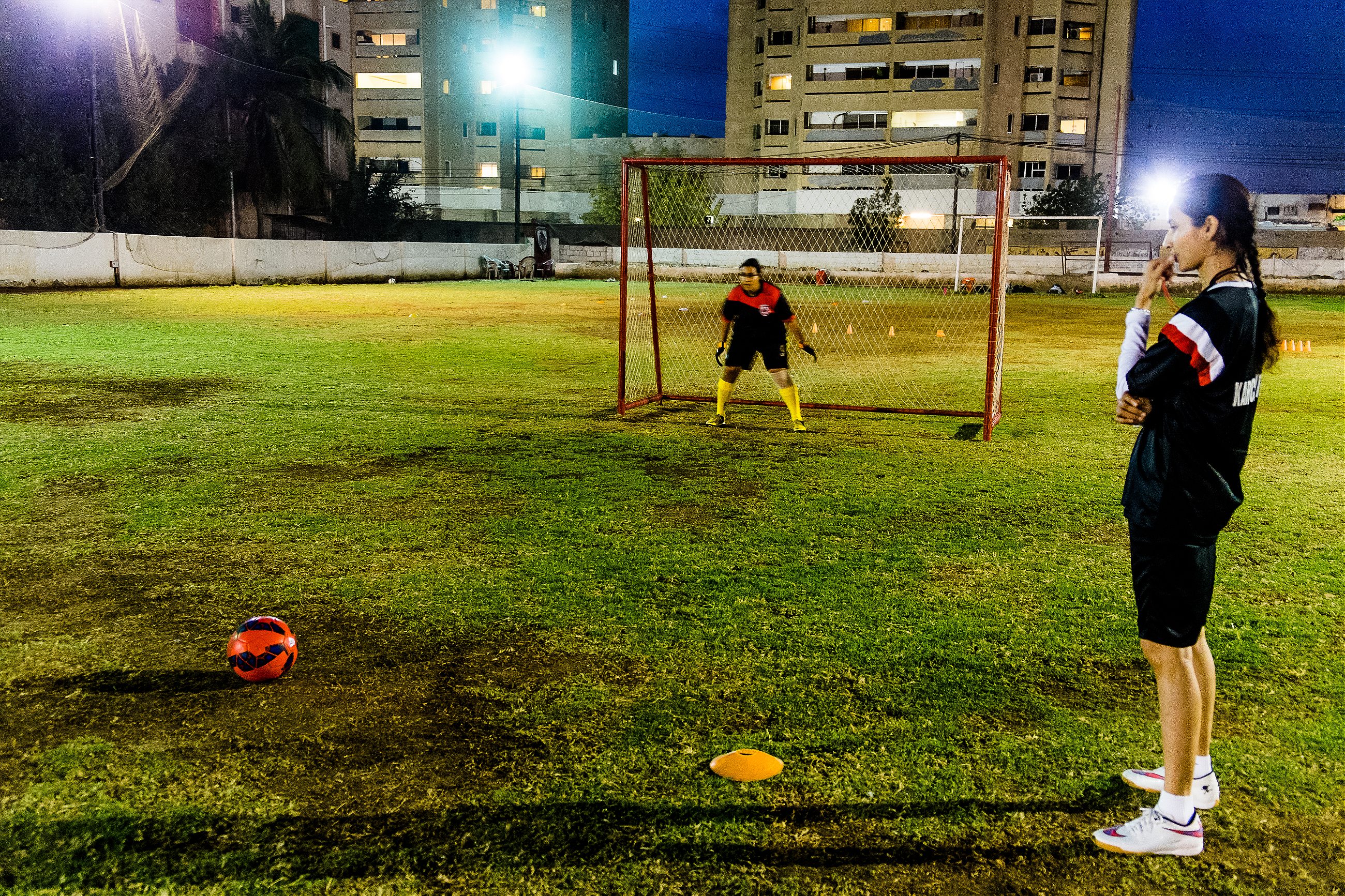
The team’s struggles also have a lot to do with how barren the women’s soccer landscape is. There are very few coaches, trainers, and players available. Hussain and Kazmi both handle the club’s administrative side during the day; they coach the under-12s and the under-16s three times a week, and train with the senior squad the other three days. They also used to coach the senior team until very recently, put in the impossible situation of passing the ball and receiving it too.
“Who do we hire? Who’s going to help us? There’s nobody else,” Kazmi says.
There is some national infrastructure, but like any sagging bureaucracy, it presents more obstacles than it offers assistance. In an organization chart on the PFF’s website, the women’s national team administrator is second from bottom in the hierarchy, only above the likes of the “Marketing and Integrity” manager. The team tells me it hosts only one tournament a year; the website lists only three. There isn’t any women’s league, and competitive matches are hard to come by. The path to a place on the national team, then, is fraught.
Since there aren’t any open trials either, the KU players tell me there’s just one way to get on the squad: the National Women’s Championship, known simply as “the nationals,” an annual tournament showcasing the best available talent. If a player shines at the tournament, they are often recruited to the national team. But because of KU’s registration troubles, they have never been able to participate. Instead, KU players, including Hussain and Kazmi, have done so by proxy, training with and playing for the registered clubs only for the duration of the tournament.
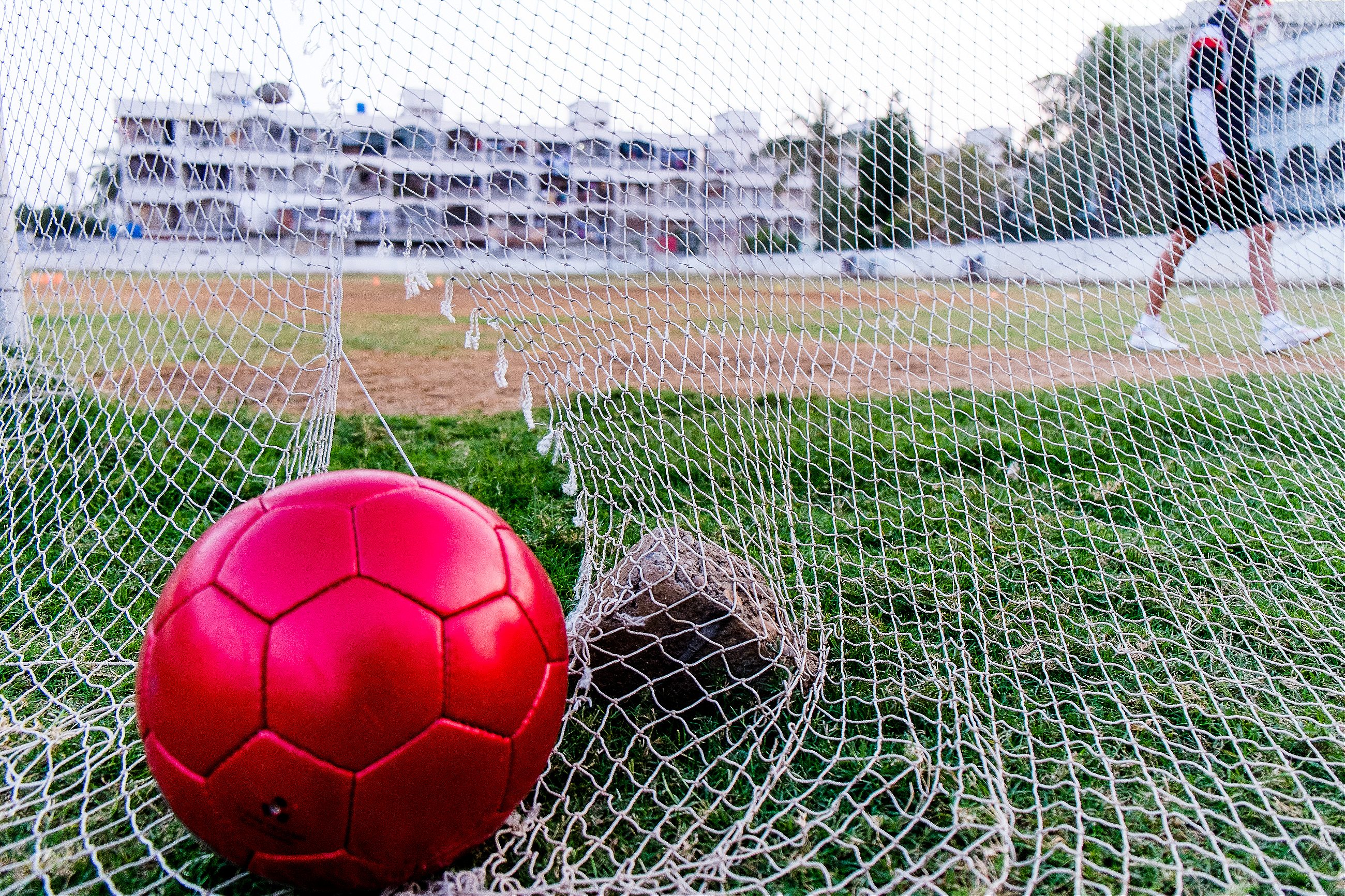
This set-up excludes most clubs and players from participating, and creates lop-sided competition to comic effect. Last year, Balochistan United, easily the best women’s club, won matches in its group by scores of 14-0 and 17-0. In the quarterfinal, the team beat Punjab WFC 19-1, and won the final 7-0. There may also be a conflict of interest. Balochistan United is owned by Rubina Irfan, a senator who also heads the PFF’s women’s division. That’s akin to Chelsea’s owner Roman Abramovich also heading England’s Football Association.
“The reply we always got wasn’t, ‘We’ll get you registered,’ it was, ‘Come play for us,’” Kazmi told me. In this way, the KU players alleged that the PFF administration is more preoccupied with its own domestic success rather than the development of the sport. A player was quite direct: “The problem isn’t that the PFF doesn’t organize enough tournaments for us. The problem’s the PFF.” (Rubina Irfan was unavailable for comment.)
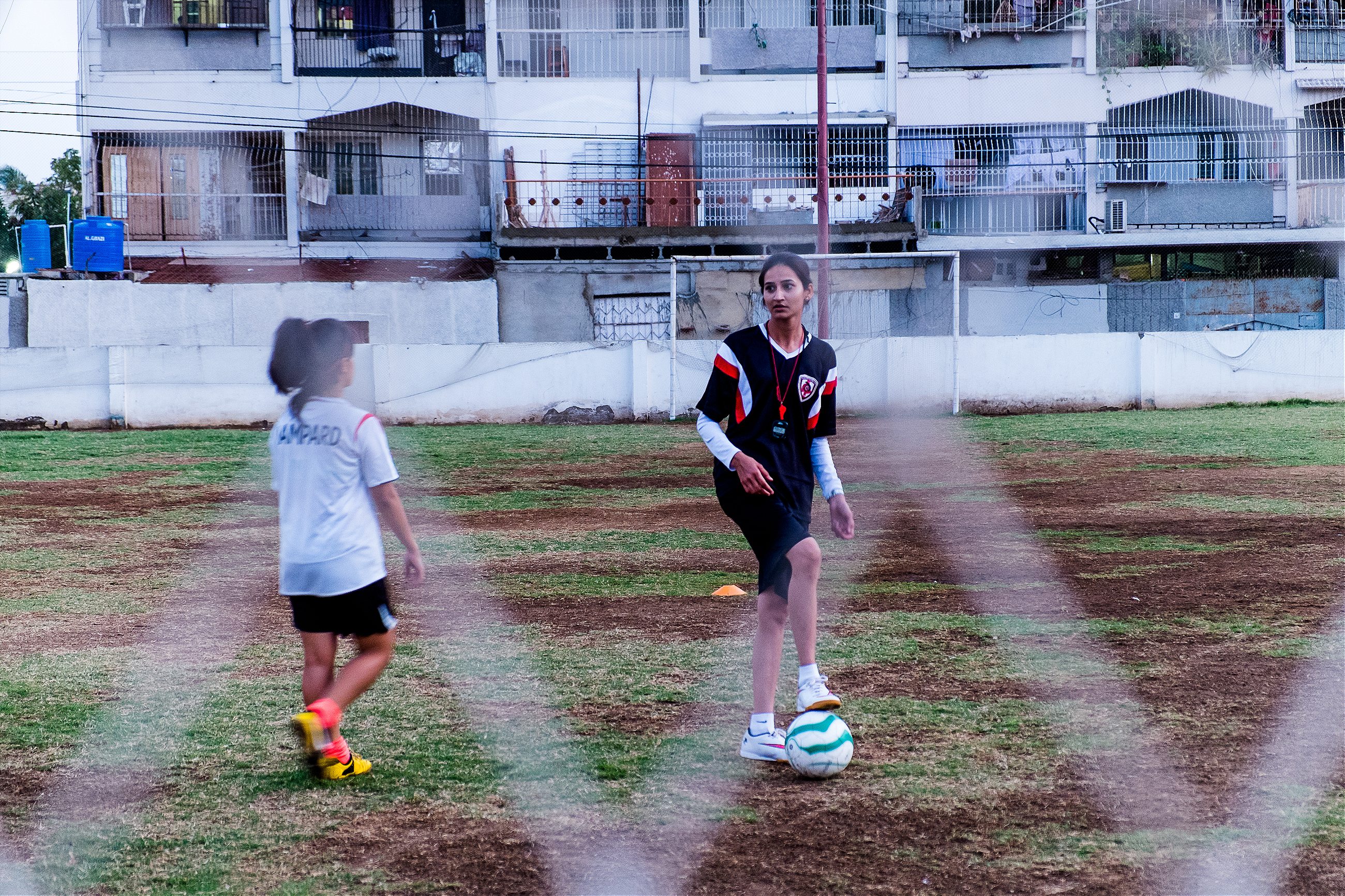
Without institutional help, the women have still managed quite a lot. Their core team has been playing together for years, and they identify and recruit talent from the U-16 academy. They are also financially sustainable; the women’s team has a range of activities for revenue. They have an academy, where parents pay a monthly fee to enroll their children, as young as two and as old as sixteen, to train with coaches and senior staff members. The academy provides the club the opportunity to recruit talented footballers onto the senior teams. The club also assists elementary and high schools in the city with their sports programs.
And the team really means a lot to its players. Alina Marri, 19, is a freshman social studies student at a local college. The subjects don’t interest her, and she finds herself drifting, waiting only for the opportunity to play. “I don’t know what else I would do if I didn’t do this,” she tells me. She’s looking to go professional, but isn’t interested in switching teams, and so the idea of playing for the national team seems distant to her.
Nina Zehri, 21, whose diminutive figure belies her powerful shot, didn’t know playing football was an option for women. Despite having always liked the sport, she never properly played until she joined KU. The players are also good friends, and the attitude at training is generally relaxed. (During a free kick drill, the goalkeeper derisively told the wall, “Relax, you guys are flat-chested!”) Three players are employed in some capacity by the club, so both on and off the pitch, soccer has become their lives.
Right now is a kind of purgatory for the players. “As far as we know, we’re registered, but nationals are far away. So we’re trying to hold matches with other teams, but it’s difficult,” says Hussain.
Residents frequently throw things at them.
It must be said that KU’s players come from a select socio-economic group. They speak English to each other, and many have cars and drivers waiting for them outside the ground to take them home once they finish. When asked about class divisions being a factor, the team shifted uncomfortably. “We’re open to players from all backgrounds,” was the official stance, but the team struggled to explain why only one was represented. “The less privileged players are more interested in their individual progression rather than the team’s, and they’re more likely to end up playing for people like Ruby [Rubina Irfan] than for us,” Hussain explained. It’s also harmed their revenue prospects. They approached an energy firm a few years ago for corporate sponsorship, and they were refused. “‘You guys came in cars,’ the sponsor said. ‘Why do you need money?’” a player told me.
I attended an academy session in another residential park. There was a big block of apartments on one side, casting a shadow over the pitch. A player pointed at them and told me the residents frequently throw things at them. “Mostly it’s onions. But we’ve also had sharper things and medicine bottles.”
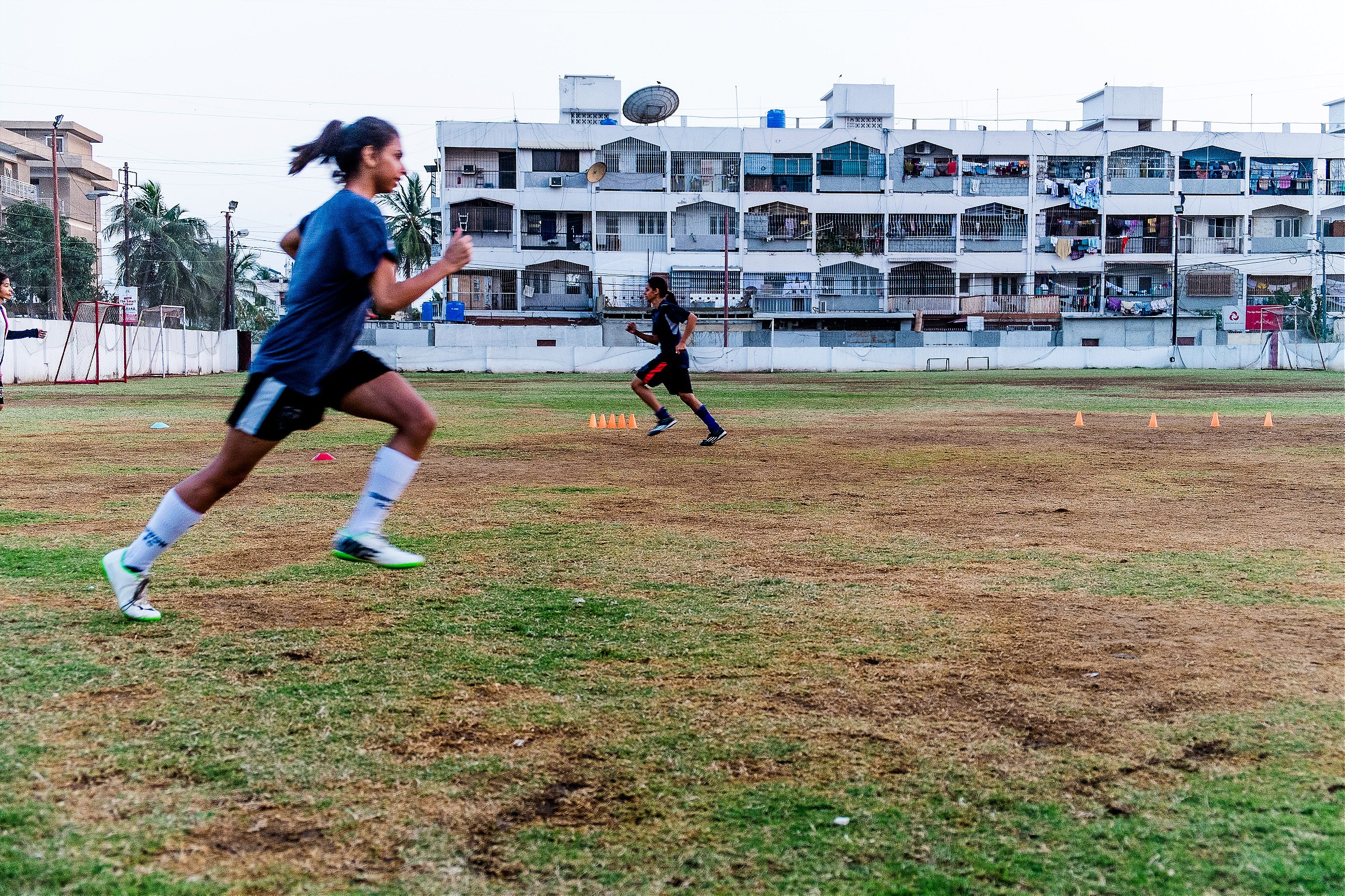
They train more centrally in the park as a precaution. Khadija trained the U-12s, Mashal the U-16s. The U-12s went over the basics. “You could be a great player, but not be in a great team,” Khadija told the girls. “The key is passing and making space. Why is making space important?” A few raised their hands. “Because it allows your players to run in that space, and makes it difficult for your opponent to get the ball from you.”
The U-16s were running a basic drill where four girls in a square would simultaneously pass multiple balls to each other without breaking the pattern, sort of like collective juggling. But it wasn’t working very well, and Hussain was getting frustrated. “Don’t say sorry,” she reprimanded a girl who fluffed her pass. “Sorry doesn’t do anything. Correct your form. Do it properly, otherwise there’s no point.” Towards the end of the session, a few U-16 boys came to play a practice match with the girls. Hussain played, and the girls beat them handily. “It doesn’t count when we score. It’s slightly unfair,” Hussain said.
She had originally told me that the club’s purpose wasn’t to make professionals or to be the best football club there is, but soccer is simply a means to “empower women. It’s there so that women know that this is also something they can do.”
That is true, but it also serves a more basic purpose. Back at their own training, a player lined up and took a powerful free kick that bent and ended in the top left corner, leaving the keeper stranded, and the rest of the players, and myself, in awe. Playing soccer is the end itself.